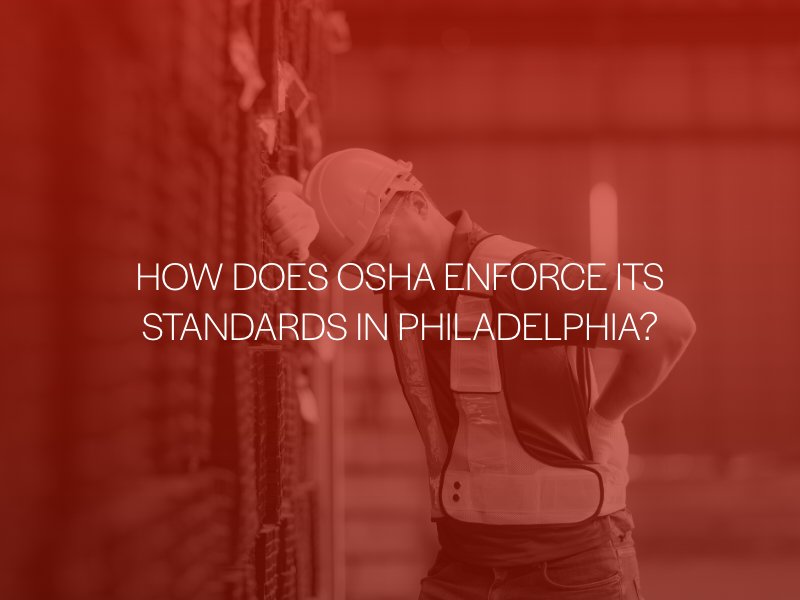How Does OSHA Enforce Its Standards In Philadelphia?

The Occupational Safety and Health Act of 1970 (OSHACT, Public Law 91-596), enacted by Congress, protects employees from dangerous safety hazards in the workplace by ensuring that employers comply with regulations that set standards for safety.
OSHA’s standards and enforcement measures have reduced the rate of occupational injuries in the United States by 40% since 1971, and decreased workplace fatalities by 60% while overall employment has nearly doubled.
What Are the Goals of OSHA Standards?
OSHA’a intended purpose is to ensure the safest possible workplace environment for all employees.
The goals of implementing OSHA standards include providing essential research information on workplace safety to employers and encouraging employers to implement and consistently update and improve workplace safety programs.
They also help put reporting systems and record-keeping practices in place and develop mandatory workplace health and safety standards. OSHA also enforces those standards.
Are OSHA Inspections Common?
OSHA uses both pre-arranged and unannounced inspections to scrutinize workplaces, particularly targeting high-risk industries like construction, agriculture, transportation, and mining.
Imminently dangerous situations and employee complaints may trigger surprise inspections. OSHA has an anonymous reporting system for confidentiality. In addition to inspections, OSHA also examines illness and injury logs to identify trends and industry hazards.
OSHA may impose fines and other penalties against employers who violate OSHA standards. It also takes legal action against employers who refuse inspections.
What Happens During an OSHA Inspection?
OSHA prioritizes surprise inspections for situations of imminent danger or in response to employee complaints.
Surprise inspections intentionally leave little time for employers to prepare. OSHA compliance officers use the possibility of imminent surprise inspections to ensure that employees regularly abide by safety standards rather than doing last-minute preparations for inspections.
Employers should regularly remain prepared for inspections by doing the following:
- Keeping accurate documentation of safety training sessions and procedures
- Ensure that managers and employees understand employee rights and employer responsibilities
- Prioritize safety and be willing to make changes when required
Most inspections begin with a brief conference between the OSHA official and company managers or union officials to discuss the inspection process and examine the company’s records of safety and health incidents.
Then, the OSHA compliance officer performs a walk-around inspection of the workplace and make assessments of job sites.
They may expand the scope of the inspection if they find anything of concern. After making assessments, they have a secondary conference with managers where the officer discusses their findings.
When an inspection reveals a problem, OSHA allows time for employers to correct the problem before performing secondary assessments.
What Are the Penalties for OSHA Violations?
OSHA enforces penalties for violations of safety standards. The maximum penalty amount for serious violations in 2024 is $16,131.
If the problem isn’t addressed, they may fine up to that amount per day after the deadline to resolve the problem passes. Employers with repeated or willful violations may receive fines of up to $161,323 per violation.
OSHA offers on-site and outreach programs for employers to assist them in bringing their worksites and safety training up to acceptable standards.
